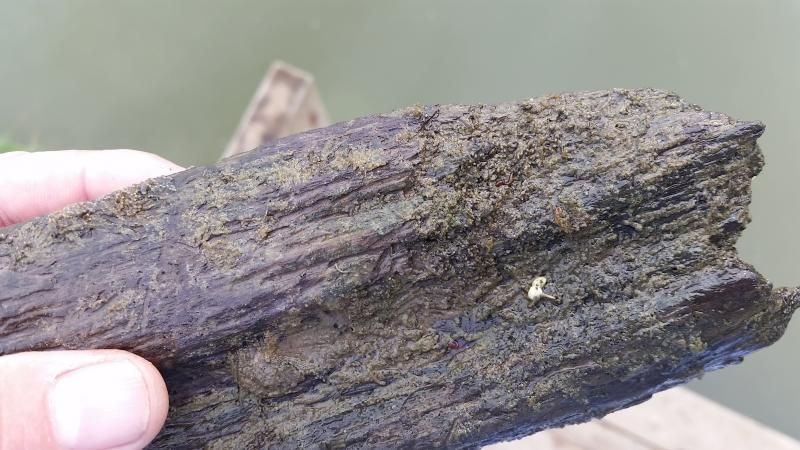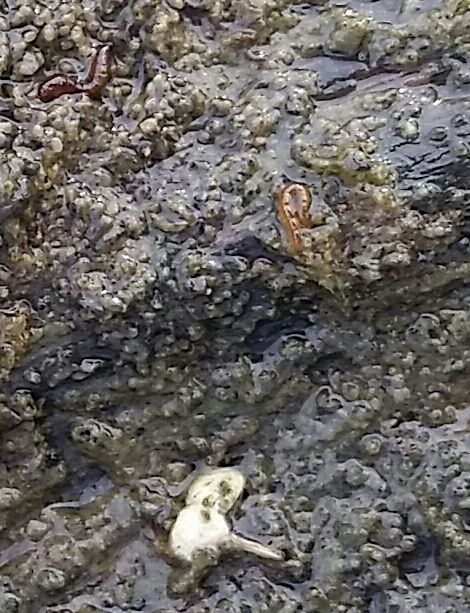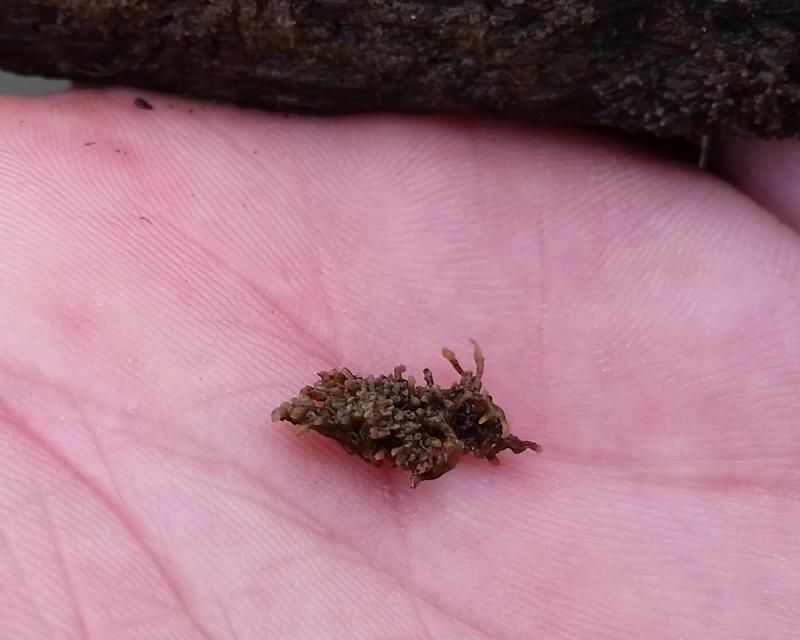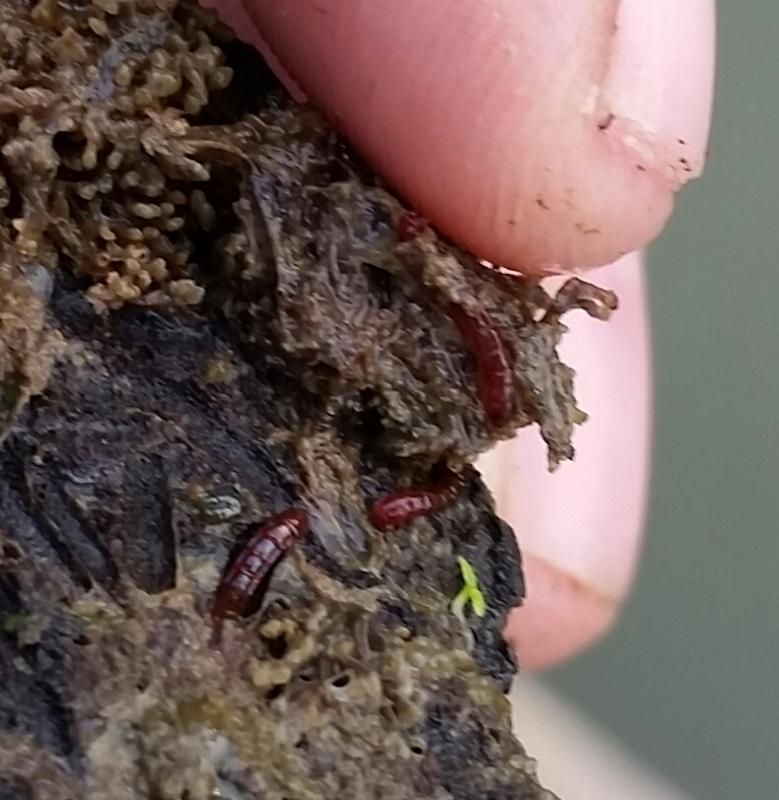Here are a few more pictures. There are four bloodworms/larvae in this picture, two red ones, a smaller brownish one, and an even smaller green one that is real hard to see.

Up close of one of the red ones and the brown one.

One of the long parts on this piece I peeled off was actually moving back and forth.

There appears to be a small green one (u-shape) just to the left of the the lower red one.

Could this be some type of midge egg mass? I know the pictures aren't great simply because these things are so small.
Bryozoans are probably not a significant part of the the food chain in my pond, but bloodworms should be.
http://www.ces.ncsu.edu/depts/ent/notes/Urban/midges.htmLIFE CYCLE
There are four stages in the life cycle of chironomid midges. Eggs are laid on the surface of the water. Each gelatinous egg mass may contain up to 3,000 eggs depending on the species. Eggs sink to the bottom and hatch in several days to one week. After leaving the egg mass, larvae burrow into the mud or construct small tubes in which they live. Larvae enlarge their tubes as they grow. Suspended organic matter in the water and in the mud is used as food by the developing larvae. After they grow, the larvae take on a pink color and gradually turn a dark red. Consequently, mature larvae are commonly called “blood worms”. The red color results from an iron containing compound, haemoglobin, that is in the midge’s blood. The haemoglobin allows the larvae to respire under low dissolved oxygen conditions in the bottom mud. The larval stage can take from less that 2 to 7 weeks depending on water temperature. Larvae transform into pupae while still in their tubes. After 3 days, pupae actively swim to the sur-face, and adults emerge several hours later. Adults mate in swarms soon after emerging. Because they do not feed, adults live for only 3 to 5 days.